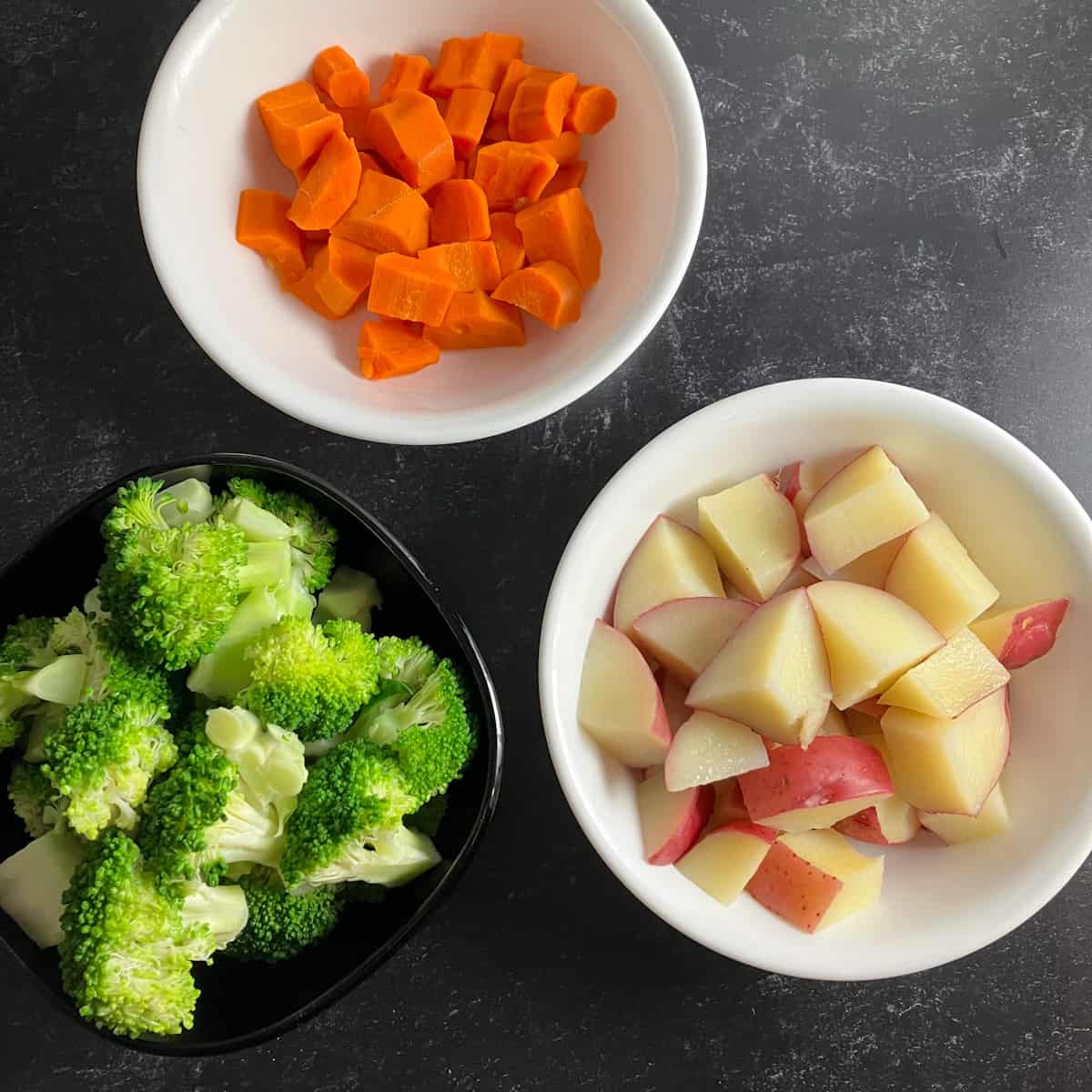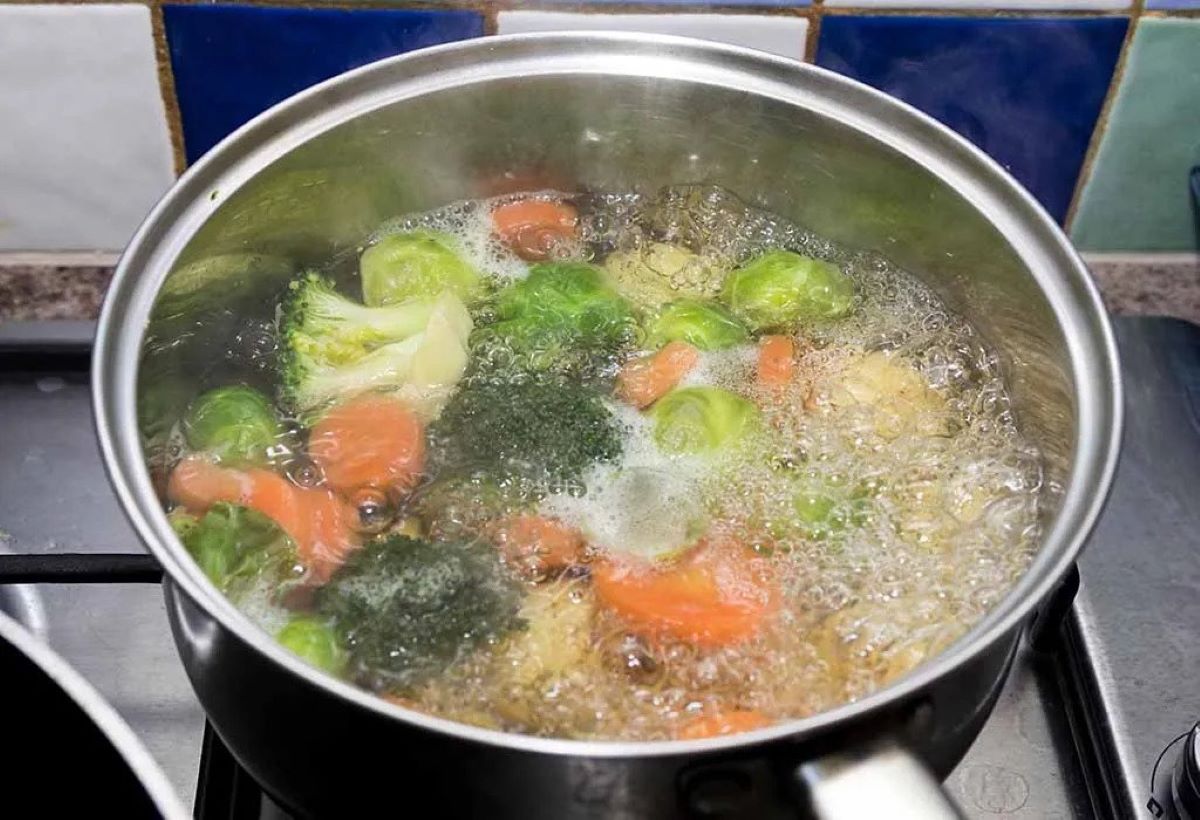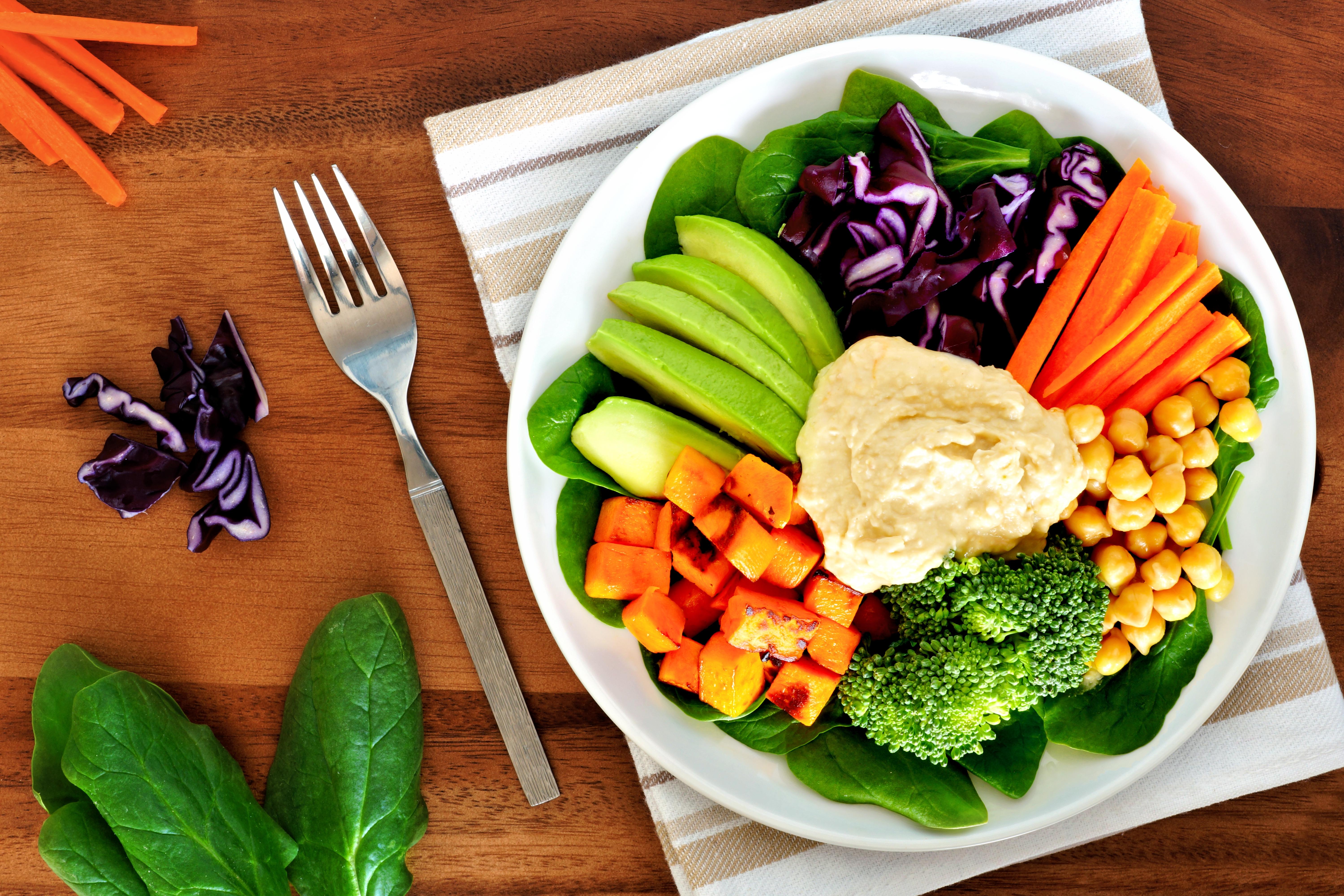Home>Gardening News and Trends>Latest News>How To Steam Vegetables In Microwave


Latest News
How To Steam Vegetables In Microwave
Modified: January 22, 2024
Learn the latest news on how to steam vegetables in the microwave with our step-by-step guide. Enjoy healthy and delicious meals in minutes!
(Many of the links in this article redirect to a specific reviewed product. Your purchase of these products through affiliate links helps to generate commission for Chicagolandgardening.com, at no extra cost. Learn more)
Table of Contents
- Introduction
- Benefits of Steaming Vegetables in the Microwave
- Step-by-Step Guide to Steaming Vegetables in the Microwave
- Choosing the Right Vegetables for Microwave Steaming
- Tips for Successful Microwaving of Vegetables
- Common Mistakes to Avoid When Steaming Vegetables in the Microwave
- Alternative Methods for Steaming Vegetables Without a Microwave
- Conclusion
Introduction
Steaming vegetables is a popular cooking method that helps to retain the nutrients and natural flavors of the vegetables. While many prefer using traditional steamers or stovetop methods, the microwave is a convenient and time-saving alternative for steaming vegetables. Whether you’re a busy professional, a college student in a dorm, or simply looking for a hassle-free way to cook healthy meals, steaming vegetables in the microwave is a practical option to consider.
In this article, we will explore the benefits of steaming vegetables in the microwave and provide a step-by-step guide to help you steam vegetables to perfection. We will also share tips and tricks for selecting the right vegetables, as well as common mistakes to avoid. Additionally, for those who do not have access to a microwave, we will discuss alternative methods for steaming vegetables.
By the end of this article, you will have all the knowledge and tools necessary to steam vegetables in the microwave, allowing you to enjoy delicious, nutritious, and hassle-free meals in no time.
Benefits of Steaming Vegetables in the Microwave
Steaming vegetables in the microwave offers several advantages over other cooking methods. Here are some of the key benefits:
1. Time-saving: One of the biggest advantages of using the microwave for steaming vegetables is the significant amount of time it saves. Unlike stovetop steaming or using traditional steamers, which often require a longer cooking time, the microwave can steam vegetables in just a few minutes. This is particularly beneficial for those with busy schedules or limited cooking time.
2. Retains nutrients: Steaming is a gentle cooking method that helps to preserve the natural nutrients found in vegetables. It minimizes nutrient loss compared to boiling or frying, which can lead to the depletion of vitamins and minerals. Since microwaving vegetables requires minimal water, the nutrients remain intact, ensuring you receive the maximum nutritional benefits from your vegetables.
3. Preserves color and texture: Microwaving vegetables for steaming helps to retain their vibrant colors and crisp texture. Unlike boiling, which can cause vegetables to become mushy and lose their appealing appearance, steaming in the microwave maintains the freshness and visual appeal of the vegetables.
4. Easy and convenient: Using the microwave for steaming is incredibly easy and convenient. Simply place the vegetables in a microwave-safe container, add a small amount of water, cover, and microwave for the specified time. There is no need to monitor the cooking process continuously, freeing up time for other tasks in the kitchen or household.
5. Versatility: The microwave allows you to steam a wide variety of vegetables, from leafy greens like spinach and kale to root vegetables like carrots and potatoes. You can also steam different vegetables together, taking advantage of their varying cooking times without compromising the final results.
Overall, steaming vegetables in the microwave is a quick, nutritious, and convenient cooking method that helps to retain the natural flavors, colors, and vital nutrients, making it an ideal choice for busy individuals looking to incorporate healthy meals into their lifestyle.
Step-by-Step Guide to Steaming Vegetables in the Microwave
Steaming vegetables in the microwave is a simple and straightforward process. Follow these step-by-step instructions to achieve perfectly steamed vegetables:
1. Choose your vegetables: Select your favorite vegetables for steaming. Broccoli, cauliflower, carrots, green beans, and zucchini are excellent choices. Wash the vegetables thoroughly and chop them into uniform-sized pieces to ensure even cooking.
2. Prepare a microwave-safe dish: Place the chopped vegetables in a microwave-safe dish. Make sure the dish has a lid or can be covered with microwave-safe plastic wrap to create a seal during cooking.
3. Add water: Add a small amount of water to the dish, about 2-3 tablespoons. This water will generate steam and help cook the vegetables. Using too much water can result in the vegetables becoming too soggy.
4. Cover the dish: Cover the dish with its lid or with microwave-safe plastic wrap. If using plastic wrap, make sure to leave a small vent opening to allow steam to escape during cooking.
5. Microwave: Place the prepared dish in the microwave and cook on high power. The cooking time will vary depending on the type and quantity of vegetables. Start with 2-3 minutes for tender vegetables like spinach or zucchini, and 4-5 minutes for denser vegetables like broccoli or carrots.
6. Check for doneness: After the initial cooking time, carefully remove the dish from the microwave and uncover it to check for doneness. Vegetables should be crisp-tender, meaning they are cooked but still retain a slight firmness. If needed, return the dish to the microwave for additional cooking in 1-minute intervals, checking for desired doneness after each interval.
7. Season and serve: Once the vegetables are cooked to your liking, remove them from the microwave. Season with salt, pepper, or any desired herbs and spices. Serve the steamed vegetables as a side dish or incorporate them into your favorite recipes.
Remember to handle the dish and the vegetables with care as they will be hot. Enjoy the delicious, nutrient-packed vegetables that you’ve steamed in the microwave with minimal effort!
Choosing the Right Vegetables for Microwave Steaming
When it comes to steaming vegetables in the microwave, not all vegetables are created equal. Some vegetables adapt better to this cooking method than others. Here are some factors to consider when selecting vegetables for microwave steaming:
1. Density and texture: Vegetables with a denser texture, such as broccoli, cauliflower, carrots, and Brussels sprouts, tend to steam well in the microwave. These vegetables retain their shape and texture during the cooking process, resulting in satisfying crunchy or crisp-tender outcomes. On the other hand, delicate leafy greens like spinach or Swiss chard are better suited for quick, gentle wilting in the microwave.
2. Cooking time: Different vegetables require varying cooking times in the microwave. Dense vegetables like carrots or potatoes will take longer to cook compared to tender vegetables like asparagus or green beans. Choose vegetables that have similar cooking times when steaming them together to ensure even doneness.
3. Size and uniformity: Cut the vegetables into similar size pieces to ensure even cooking. Smaller pieces will cook faster than larger ones. Aim for uniformity in size to prevent some pieces from being overcooked while others are undercooked.
4. Freshness: Choose fresh, high-quality vegetables for the best results. Fresh vegetables not only taste better but also retain more nutrients. Look for vibrant colors, firm textures, and no signs of wilting or spoilage.
5. Flavor profile: Consider the flavors and compatibility of the vegetables with the rest of your meal. Choose vegetables that complement the other ingredients or seasonings you plan to use. This will help create a well-balanced and enjoyable dish.
Some popular vegetables that are well-suited for microwave steaming include broccoli, cauliflower, carrots, green beans, Brussels sprouts, asparagus, and zucchini. Experiment with different vegetables and combinations to discover your personal favorites.
By selecting the right vegetables for microwave steaming, you’ll ensure that your cooked vegetables retain their texture, flavor, and nutritional value, resulting in delicious and healthy meals.
Tips for Successful Microwaving of Vegetables
To achieve delicious and perfectly steamed vegetables using the microwave, here are some helpful tips to keep in mind:
1. Use the right container: Choose a microwave-safe dish with a lid or one that can be covered with microwave-safe plastic wrap. Ensure the dish is spacious enough to hold the vegetables without overcrowding, allowing the steam to circulate evenly.
2. Cut vegetables into even pieces: Cut the vegetables into uniform-sized pieces to ensure they cook evenly. This will help prevent some pieces from being overcooked while others are undercooked.
3. Add the right amount of water: Add a small amount of water, around 2-3 tablespoons, to generate steam without making the vegetables too soggy. Avoid adding too much water, as this can result in waterlogged vegetables.
4. Season appropriately: While steaming adds natural flavor to the vegetables, you can enhance the taste by adding a sprinkle of salt, pepper, or your favorite herbs and spices. Season the vegetables before steaming or after they’re cooked, according to your preference.
5. Stir or rotate: If you’re steaming a large amount or if your microwave has uneven heating, consider stirring or rotating the dish halfway through the cooking process. This ensures even heat distribution and helps prevent any spots of overcooked or undercooked vegetables.
6. Monitor cooking time: Keep a close eye on the vegetables while they’re cooking and be mindful of the recommended cooking times. Overcooking can result in mushy vegetables, while undercooking may leave them too crunchy. Adjust the cooking time based on your microwave’s power and the desired texture of the vegetables.
7. Let the steam settle: After cooking, allow the dish to sit for a minute or two to let the steam settle. Be cautious when removing the lid or plastic wrap, as hot steam can escape and cause burns.
8. Serve immediately: Microwaved vegetables are best enjoyed when served soon after cooking. This ensures they retain their optimal texture, flavor, and nutritional value. Avoid leaving the vegetables in the microwave for too long, as they may become overcooked or lose their freshness.
Following these tips will help you achieve consistent and delicious results when steaming vegetables in the microwave. With a little practice and experimentation, you’ll develop a knack for perfectly steamed vegetables every time!
Common Mistakes to Avoid When Steaming Vegetables in the Microwave
While using the microwave to steam vegetables is a convenient and efficient cooking method, there are some common mistakes that can affect the outcome of your dish. Here are a few mistakes to avoid:
1. Overcooking: Microwaving vegetables for too long can result in overcooked, mushy vegetables. Pay close attention to the recommended cooking times and adjust accordingly. Remember that microwaves can vary in power, so it’s important to monitor the vegetables as they cook.
2. Undercooking: On the flip side, undercooking vegetables can leave them too crunchy and difficult to chew. If your vegetables are not cooked to your desired tenderness, continue microwaving them in short intervals until they reach the desired doneness.
3. Using too much water: Adding too much water to the dish can lead to waterlogged vegetables. Stick to the recommended amount of water or use just enough to generate steam. This will help preserve the texture and flavor of the vegetables.
4. Overcrowding the dish: Avoid overcrowding the dish with too many vegetables. Overcrowding can prevent proper steam circulation and result in uneven cooking. If you have a large quantity of vegetables, it’s better to steam them in multiple batches or use a larger microwave-safe dish.
5. Not covering the dish: Failing to cover the dish during microwaving can cause the vegetables to dry out and lose their natural moisture. It’s important to cover the dish with a lid or microwave-safe plastic wrap to trap the steam and ensure the vegetables cook in their own moisture.
6. Not seasoning adequately: While steaming vegetables naturally brings out their flavors, it’s essential to season them appropriately. Adding a sprinkle of salt, pepper, or herbs can enhance the taste and make the vegetables more enjoyable. Don’t be afraid to experiment with seasonings that complement the flavors of the vegetables.
7. Not letting the steam settle: After removing the dish from the microwave, allow it to sit for a minute or two before uncovering. This allows the steam to settle and prevents hot steam from escaping and causing burns when removing the lid or plastic wrap.
By avoiding these common mistakes, you’ll be able to achieve perfectly steamed vegetables in the microwave, retaining their texture, flavor, and nutritional value.
Alternative Methods for Steaming Vegetables Without a Microwave
If you don’t have access to a microwave or simply prefer alternative cooking methods, there are several ways to steam vegetables without using one. Here are a few alternative methods you can try:
1. Stovetop steaming: Stovetop steaming is a traditional and effective method for steaming vegetables. Simply place a steamer basket inside a pot filled with a small amount of water. Bring the water to a simmer, add the vegetables to the steamer basket, cover, and steam until they reach the desired tenderness.
2. Steamer pot: Another option is to use a steamer pot, which consists of a pot with a separate steam basket or tray. Fill the bottom of the pot with water, place the vegetables in the steam basket, cover, and steam until cooked through.
3. Electric steamer: Electric steamers are standalone appliances that take the guesswork out of steaming vegetables. Simply add water to the reservoir, place the vegetables in the steaming compartment, set the timer, and let the steamer do the rest.
4. Microwave-safe steamer bags: If you prefer a microwave-free option, you can use microwave-safe steamer bags. These bags allow you to steam vegetables in the oven or on the stovetop. Simply place the vegetables inside the bag, seal it, and follow the instructions for steaming using your desired cooking method.
5. Parchment paper packets: Create individual parchment paper packets filled with vegetables for a flavorful and healthy steaming method. Place the vegetables on a sheet of parchment paper, fold it into a packet, and bake it in the oven until cooked through.
6. Grill or barbecue: Steaming vegetables on the grill or barbecue adds a smoky and unique flavor. Wrap the vegetables in foil or place them in a grill basket, close the lid, and let them steam over indirect heat until tender.
These alternative methods provide you with various options for steaming vegetables without a microwave. Experiment with these techniques to find the method that suits your preferences and cooking style best.
Conclusion
Steaming vegetables in the microwave is a convenient and efficient way to cook healthy and delicious meals. It offers numerous benefits, such as time-saving, nutrient retention, and preservation of color and texture. By following a simple step-by-step guide and considering the right vegetables for microwave steaming, you can easily incorporate this cooking method into your daily routine.
Remember to use the correct container, cut the vegetables evenly, and add the right amount of water to ensure successful microwaving. Avoid common mistakes like overcooking, undercooking, overcrowding the dish, and forgetting to season adequately.
If you don’t have a microwave at your disposal, alternative methods such as stovetop steaming, electric steamers, steamer pots, or using microwave-safe steamer bags can also yield excellent results.
Whether you’re a busy professional looking for a quick and nutritious meal or someone with limited kitchen resources, steaming vegetables in the microwave provides a practical solution. With a little practice and experimentation, you’ll be able to enjoy perfectly cooked vegetables that retain their natural flavors, colors, and nutritional value.
So, go ahead and start incorporating the art of microwave steaming into your culinary repertoire. Your taste buds and your body will thank you for it!









